|
Click any picture for a larger picture in a new window

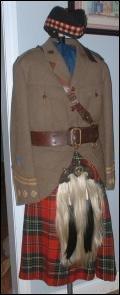
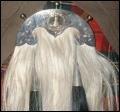
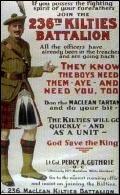
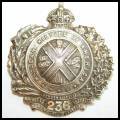
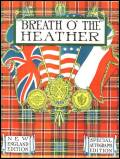
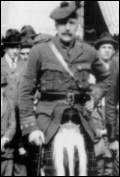

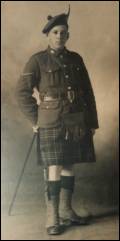
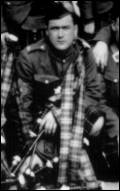
|
In 1916, the 236th Overseas Battalion, (The New Brunswick Kilties,
- Sir Sam's Own), C.E.F. (Canadian Expeditionary Forces) began life
as a New Brunswick based battalion (their correspondence, and newsletters
referred to them from the beginning, as the Maclean Kilties). The original
"...idea of having a battalion of Scottish Highlanders represent the
Province of New Brunswick", was that of Lieutenant-Colonel Percy Guthrie.
The idea struck him when he was "......lying in No. 2 Canadian Stationary
Hospital in France, upon hearing the skirl of the pipes as a Scottish
Battalion passed on it's way up the line". According to Guthrie he was
promised assistance by no less than the Prime Minister of the day, Sir
Robert Borden, and the Minister of Militia, Sir Sam Hughes, (hence Sir
Sam's Own) while in hospital.
When sent home (he was born and raised near Fredericton), on medical
leave he began to put his plan into action. Even though WW 1 was well into
it's 2nd year, and those most anxious to fight had already gone overseas,
Guthrie believed in the "lure" of a Scottish regiment. He was not the only
one. Although the Kilties came into existence on May 15, 1916, they were
not allowed to recruit until six other battalions had filled their ranks.
The Officer Commanding feared that "....the new unit with it's pipes and
kilts...." would be too popular! When finally allowed to start recruiting,
the leaders of the new unit made full use of this allure. Although a new
unit, the vast majority of it's officers, and NCO's were overseas veterans,
many who had been wounded. This increased their appeal to men who were raw
recruits. One of the promises to the men, was that they would "fight as a
unit". The campaign included not only wounded soldiers exhorting potential
recruits, but a fiery St Andrews Cross, which was taken by car, horse and
foot all around New Brunswick. As the "piece de resistance" at 8:00 o'clock,
at each of fifteen locations, on the first day of recruiting ".....a little
girl dressed in the tartan of Clan Maclean, opened the meetings by reciting
"Fire the Pile on Craig-Gowan Height", at which time huge bonfires were lit
on the highest summit nearby. Clan traditions, or at least how they were
remembered, were effectively used! Perhaps paramount was the appeal to the
"fighting spirit" and pride in Scottish Highland roots. The pipe band, and
the distinctive kilt emphasised these sentiments. One hundred years after
many of these men's ancestors had immigrated to Canada, (- and some
subsequently to the United States,) "the blood is (was) strong, the heart
is Highland" (Canadian Boat song).
The approach was effective, but alas, there were simply not enough eligible
men in New Brunswick to bring the battalion to full strength (over 1000).
The next step was to recruit across Canada. Plans were set in motion to
convey the appeal across the land. After only two months of "Dominion" wide
recruiting, other battalions began "....sending protests to Ottawa, urging
that the MacLean Highlanders were gobbling up the recruits they would
otherwise have obtained, which resulted in the authority for recruiting
outside of New Brunswick being cancelled...." (Pg 12 -13 war record 236th
Battalion, O.M.F.C. MacLean Highlanders).
Meantime, the Kilties had established themselves in Fredericton and had
begun working on Old Government House to make it suitable for a Barracks,
and training headquarters. The Kilties had agreed to refurbish the
residence, if they were allowed to use it, AND if it could be used after
their departure for a convalescent home for returning, wounded veterans.
I understand this in fact did come to pass. This is the same building now
(again) the residence of the Lieutenant Governor of New Brunswick, and also
site of the Fredericton Highland Games.
More men were still needed. Now what? Because of the large number of
Maritimers who were working in Maine, and in the "Boston" states, - and the
fact that the U.S. had now declared war, the battalion wisely saw the
potential of cross border recruiting. The Kilties continued to be
tremendously successful and innovative recruiters. The name was promptly
changed to the Maclean Kilties of America, and off they went. Pipes and
kilts were again to the fore! Clever appeals to local politicians (of
Scots or celtic descent), to Scottish Associations, and adroit use of
newspapers led to a tremendous response. Within 11 days over 1600 recruits
were signed up. Those of American birth were passed over to U.S Recruiters,
some were funnelled to other Canadian and British units, and the Kilties
themselves ended up with over 500 men. Over 1300 applications were received
for enlistment from Boston alone. It was noted that Col. Guthrie did a
recruitment speech before a ball game between the Red Sox and the Detroit
Tigers, at which time he presented a swagger stick to (amongst others) the
famous Ty Cobb!
The battalion was now up to strength, and was posted for further training
in Valcartier, Quebec. This training was continued in Quebec City and in
Montreal. The Battalion some 1087 strong, embarked for England on HMT
(His Majesty's Troopship) "Canada", and arrived in Liverpool on November
19, 1917. A final name change resulted in the battalion becoming the 236th
O.S Battalion, C.E.F. MacLean Highlanders. (I have pictures of hat badges
with the insignias of both the "New Brunswick Kilties", and the "MacLean
Kilties of America", but am not sure if hat badges with MacLean Highlanders
were ever created).
So why were they the Maclean Kilties, or Highlanders - as opposed to the
MacDonald Kilties, the MacLeod Kilties, or any of the other common Highland
Scots names in Atlantic Canada? The obvious answer is they wore the Maclean
of Duart dress tartan. But why? Three factors probably influenced the
decision. The best known military man in New Brunswick at the time was the
Government Officer Commanding New Brunswick troops - Brigadier General HH
MacLean, - who had also been a successful politician! - and the first named
person in an article (from the initial Breath O' the Heather, the Battalion
newsletter) entitled "Some Patrons of the Kilties" was Lt. Col Angus McLean
M.D. He gave funds for "... recruiting, publicity and for equipping the
regiment in the kilt of the Maclean of Duart...". Finally, and one can never
underestimate the power of mothers, Colonel Guthries' mother, was, you
guessed it, a MacLean.
The high point at Seaford Camp was an inspection by Sir Donald Fitzroy
Maclean, the Chief of Clan Maclean. He presented the battalion with two
beautiful pipe banners, one bearing his arms', and one the battalion
crest. The current Chief of the Macleans, Sir Lachlan Maclean, told me
that at that time, they had presented Sir Fitzroy with a sgian dubh,
which is still at Duart Castle, along with the colours.
By the end of February, they were passed as ready for France. Soon after
in March, 1918 they went. Despite many protests from the officers, the men,
from Scottish Association(s) in Canada and the U.S., even from His Majesties
Consul General in Boston, the battalion was broken up and used as
reinforcements for those battalions already in France. The only concession
was that men from New Brunswick were given the option of joining the New
Brunswick Regiment, while the majority were allowed to transfer to another
kilted regiment, the Black Watch, Royal Highlanders of Canada, part of the
20th Canadian Reserve Battalion. At least one of the men, a New Brunswicker,
Charles Cromwell, and his pipes "played into Mons, Belgium at 7:30 AM
November 11th, 1918 Armistice Day".
To quote E.S Garner in his article on the MacLean Kilties (Crown Imperial
no 46, Spring 1987) "I have no doubt that it made sense logistically to
maintain the strength of existing battalions. (However) Napoleon, I think,
knew more about soldiers than most, and his dictum that morale was to
material, in the proportion of three to one, encourages my own thought
that logistics might have given way to sentiment on this occasion". Hear!
Hear!
To ensure that this regiment is not forgotten, Clan Maclean Atlantic in
partnership with the (Scotland based) Clan Maclean Heritage Trust, and
the New Brunswick Scottish Cultural Association, is working with
representatives of the Lieutenant Governor to create a plaque commemorating
this unique battalion. This will be placed in, or on the grounds of, their
former barracks, Old Government House. We hope that the official unveiling
will take place in the summer of 2006.
|